Read next
The latest news, updates and expert views for ambitious, high-achieving and purpose-driven homeowners and property entrepreneurs.


When it comes to extending a home, converting a building or developing new build houses, the building regulations drawings package is one of the most important sections of the entire process. Without detailed building regulations drawings, the success of your project will suffer, regardless of how great your design is.
We have been receiving building regulations enquiries for many years now, and it's surprising to us how many people take the building regulations application drawings lightly.
Some of them use the services of unqualified online architects and end up disappointed once their application is turned down - similar to tales of low-cost flying nightmares. Or they rely on their building regulations approval drawings when they appoint a builder and end up distressed once their construction cost hikes.
In this article, we are going to explore the best practices for preparing building regulations drawings, their purpose, and how to get building regulations approval with ease.
You will learn about the importance of building regulations approval and what it means for your project. You will also learn about the best methods of obtaining building regulations approval and what type of Building Regulations drawings you need to submit.
Building Regulations are standards that apply to all buildings to make sure they are safe for people who are in or around them. The Building Regulations contain a series of Approved Documents covering the technical aspects of construction work. The Approved Documents consist of:
Put simply, Building Regulations deal with the technical and constructional details of building works to ensure the health and safety of people in and around the building.
The Building Regulations apply to the majority of new builds and many alterations to existing buildings. In order to show that you are complying with Building Regulations for your project, you need to submit your Building Regulations drawings for Building Control approval.
Your architect should prepare your Building Regulations application drawings based on technical legislation that is laid out in the Approved Documents. Designing your project to meet Building Regulations ensures that your building:

In case you don’t know: Building Regulations approval is not the same as Planning Permission. Planning permission and Building Regulations approval (Building Control) are two separate pieces of legislation. Sometimes you may need both; sometimes you may only require one; or none at all.
Before we go any further, we need to understand the difference between Planning Permission and Building Regulations. Let us explain…
Planning permission covers the principles of development, assessing whether the development will accord with local and national policies, whereas building regs drawings cover the structural and technical aspects of the project.
Because the planning legislation is distinct from Building Control legislation, it should not be assumed that one grants consent for another. Drawings at a planning stage will not cover all the requirements needed to pass Building Regulations.
Planning drawings are used to show the local planning department the scope of works, usually highlighting the appearance and layout of the proposal, paying particular attention to the proposed materials and main features of the building. The construction methods and details are not shown in this set of drawings and will not be a factor in the planning decision.
On the other hand, Building Regulations drawings are much more detailed than planning drawings, showing construction methods and details in the drawing package.
The drawing package will also contain drawings, calculations and specification from your structural engineer showing proof that your proposed works are in full compliance with all the relevant Building Regulations.
Most of the reputable architecture firms prepare very detailed Building Regulations Full Plans with calculations, specifications and construction notes for a contractor to accurately price the project. Again, this is always dependent on who is putting your Building Regulations package together.
Planning Drawings |
|
Location Plan to scale |
|
To scale plans to show the size and layout of the proposal |
Drawings with full measurements |
Illustrates scope of works |
Drawings with notes proving compliance with the relevant Building Regulations |
Shows the proposed design through plan, elevation and section |
Shows the proposed design through further drawings that can highlight but are not limited to: electrical, mechanical, drainage, demolition and fire safety |
Focuses on the appearance and materials of the proposal |
Relevant construction details at a larger scale are often required |
No construction information included |
Specification with further information about construction and materials |
No reference to Building Regulations |
Thermal calculations |
Most structural work – whether for new houses or flats, alterations, extensions or change of use – requires Building Regulations approval.
Here is the list of projects where Building Regulations are required:
You may also require Building Regulations approval if your project involves:
You do not need Building Regulations approval for some exempt projects, including:
Some types of building work can also be self-certified through the government’s Competent Person Scheme (CPS), as an alternative to getting Building Regulations approval by a Building Control body.
Each local council in England has a Building Control section. The local council has a general duty to see that building work complies with the Building Regulations. Your architect can submit your Building Regulations application to your local council to seek approval.
As an alternative to gaining approval from local authorities, the government has introduced legislation to allow private Approved Inspectors to check work requiring Building Regulations approval. You are free to choose which type of Building Control body you use on your project.
If you use an Approved Inspector instead of the local authority Building Control service, then your Approved Inspector should submit an ‘Initial Notice’ to the local authority prior to work commencing on site. Once submitted, your local authority will check the details of the Initial Notice within 5 working days.
There are two ways you can make a Building Regulations application, either by making a Full Plans Building Control application or by submitting a Building Notice notification.
A Full Plans application will consist of detailed Building Regulations plans and full specifications of the construction details together with the appropriate fee. In other words, you need to submit a set of detailed Building Regulations drawings prior to the building starting on site, outlining in detail the technical legislation that your project meets.
Or you could use a Building Notice if you are doing simple work to a domestic building. A Building Notice application doesn’t generally require the submission of detailed building regs plans or full specifications of the construction details.
However, you will not receive the protection and reassurance that a Full Plans application would give you, and the whole process of making sure your work complies with the Building Regulations is carried out at the site inspection stages.
Submitting a Building Notice instead of a Full Plans Building Control application might sound tempting, but paying for official Building Regulations drawings that meet the requirements and making sure your project is approved is worthwhile.
We say this a lot, but it bears repeating: the amount of money you spend before building starts will always be much less than the money you will end up spending if you need to make changes halfway through construction and have to rectify a fault in, dismantle or demolish something that’s already been built.
You could end up not getting approval on final inspection or receiving an enforcement notice after you’ve finished and think you’re ready to start using your new extension or loft conversion.
That is why we would recommend getting Building Regulations approval using Full Plans Building Control application where appropriate, as you are unlikely to end up with further remedial costs using this method.
If, for whatever reason, the Building Control department or an approved inspector decide your project does not meet the requirements, then this can be amended before starting the build.
When applying using the Full Plans route and the application is rejected, then there is also an opportunity to apply for determination (appeal), which is not possible with a building notice application.
Let’s say you decide that your project is too large or too complex to risk using a building notice. Or you just prefer to take the thorough, methodical approach. So what do you need to do next?
Putting together a full set of Building Regulations approval drawings requires knowledge of the regulations and the approved documents. Choosing an architect with experience of this process is key to make sure all your documentation is to a high standard and meets the requirements of the submission.
When submitting your Building Control application, you need to include a full set of Building Regulations drawings in the forms of plans, sections, elevations, details and Building Regulations notes which highlight the necessary standards and regulations.
Along with the architect’s Building Regulations approval drawings and specifications, you will also usually need structural drawings from engineers to prove the building will be safely constructed. Your engineer needs to work closely with your architect to design safe and cost-effective solutions for your development.
Although you should expect a good quality of service from all qualified architects, it’s also true that we have different strengths. Some architects are excellent at the aesthetic aspects of the job – thinking up lovely-looking buildings – but less good at the less glamorous matter of the details. At Urbanist Architecture, we have a team of qualified architects that has a balance of vision and practicality.
Your Building Regulations plans should include site location plan, floor plans, elevations and vertical sections through the building showing constructional details. Your building drawings package should also be accompanied by supporting structural calculations, specifications and construction notes.
The specification should indicate the materials and construction methods proposed to be used in the foundations, walls, floors, roof, drainage etc. In addition, calculations should justify structural integrity, thermal performance of the building and other requirements of the regulations.
Depending on your project, the requirements for Building Regulations application drawings may differ. For example, for building an extension, you will require to show the provision made for the drainage of the extension while for converting a house into flats, you will need to submit detailed energy information.
Your Building Regulations application drawings for extensions should detail:
For example, if you are creating an open-plan living area through adding a kitchen extension, then your Building Regulations plans for your home extension should show the means of escape or include the details of a traditional or modern sprinkler system.
Your Building Regulations approval drawings for loft extensions should detail:
If you are planning to convert your loft to add a new bedroom, then your Building Regulations drawings for your loft conversion should show the minimum ceiling height required, which is 2.2m.
Your Building Regulations drawings package for conversions, such as converting a dwelling house intro flat, should detail:
For example, if you are converting a house into several self-contained flats, then your Building Regulations plans should show the means of escape, insulation and ventilation in detail.
Your Building Regulations plans for new builds should detail:

Similar to property conversions, if you are building new dwellings, then your Building Regulations drawings should show the means of escape, insulation and ventilation in detail.
When you apply using a Full Plans Building Control application, the Building Control body must issue a decision within five weeks of application. Or, if it has been agreed by both parties, up to a maximum of two months.
Work can begin on-site prior to the approval notice, but you have to let the Building Control body know that approval has been sought before larger works commence on site. If your project for some reason does not comply with certain regulations, then plans can be amended prior to starting on site where necessary, without causing further construction costs.
A Full Plans approval will remain valid for three years from the date that the plans were deposited. If the application has lapsed before you begin work then you must reapply in line with the up-to-date Building Regulations.
This might mean that your application needs to be amended, as regulations will change over time. Once you begin work on-site, the notice lasts indefinitely.
Building notice applications can be accepted as quickly as two days after application. The building works can begin once the notice has been accepted. The building notice is also valid for three years, but from the date that the notice was given. Once the works have started on site, the notice lasts indefinitely.
For both methods, inspections will be carried out over a variety of stages by the Building Control body dealing with the project, to ensure that the works are meeting regulations and are built in line with the submitted plans.
Providing they have seen all relevant stages of the build, that everything complies with the Building Regulations, all necessary certificates have been provided, and all fees paid, then a Completion Certificate will be issued for the development, once the build is completed. It is always important to make sure that you receive a completion certificate when the project is completed.
Failing to comply with Building Regulations can have a number of consequences. The first, as we’ve already mentioned, is that you could end up having to undo the work done at your own cost. If you refuse to make the changes after an enforcement notice, the council can come in and get its own contractors to carry out the demolition and charge you for it.
Alternately, your builder could end up getting prosecuted and fined. You won’t be the one paying the fine but you will have to deal with the consequences, usually by hiring a new builder with the delays that can cause.
This is why you should be very thorough when choosing a contractor and also why you should consider having an architect or chartered surveyor acting as your contract manager.
Finally, if you end up without a completion certificate because the building inspector does not feel the work has been carried out correctly, it can be extremely difficult to sell a property.
Starting work without applying for Building Regulations is a criminal offence. You should always apply for Building Regulations before you start on-site, and if you do not then you are liable on summary conviction to a fine.
If you carry out work that does not comply with Building Regulations, then the work will need to be altered to meet regulations or demolished.
Any projects that do not meet regulations, and therefore do not receive the relevant certificates, will be difficult to sell or finance in the future, due to lack of necessary approvals and paperwork.
Applying for Building Regulations Approval retrospectively (Building Control regularisation) for unauthorised works is possible through a regularisation application.
This application can only be done through the local authority Building Control department and is for works that were carried out without Building Regulations consent, started on or after 11 November 1985.
Applying for the Building Control regularisation involves opening the works up for inspection, which can be an expensive and intrusive process. Any works that do not appear to meet the requirements of the Building Regulations will have to be corrected to be made compliant, which can also come at a high cost, depending on the number of works that need to be altered.
On completion of this process, a certificate of regularisation will be issued for the development.
Building Regulations drawings contain a lot of information and detail about the construction of a project and how it meets building standards, but they are not always detailed enough to build from.
Alongside Building Regulations, tender drawings and construction drawings should be provided for a project, ensuring that the drawings have the correct information for their purpose.
Building Regulations plans, although extremely detailed, may not include enough information about the scope of works you are expecting from your contractor, and so further notes and information may be required on a set of drawings, specifically for tender purposes.
This allows the project to be priced more precisely and means there is less chance for additional fees and surprising construction costs later on.
It is also important that a set of construction drawings are issued for a project that have been checked for the correct technical details and measurements to ensure that the work on-site proceeds smoothly and without any additional costs or time issues.
This is why our Stage 2: Technical Design + Building Regulations service includes Building Regulation drawings, tender and construction drawings to make sure you are getting the most appropriate drawings for each stage of your project, avoiding additional costs and time-wasting where possible.
There isn’t a standard nationwide fee structure for Building Regulations approval. Each council or private inspector can charge a different amount. But we can provide a couple of examples just to give you a general sense.
The London Borough of Redbridge charges £850 for either Full Plans Building Control application or a building notice for a single new-build house. For an extension between 20 and 60 sqm, you’ll pay £795. For that single house, Bury Council, meanwhile, will charge £273 (including VAT) for checking your plans and £390 for an inspection (that’s £663 together) or £795.60 if you choose the building notice route. For a 40 sqm to 80 sqm extension, they will charge £240 (plans) and £360 (inspection) – £600 in total – or £720 for building notice.
The average cost of Building Regulations drawings ranges from £1,000 to £15,000 for home improvement projects. For new build developments, it starts from 3% of the construction cost. Of course, this depends on who you are working with and what level of service they offer.
An RIBA chartered practice will cost more but will have more experience and knowledge of what goes into these drawings. This means that you minimise your risks and find more cost effective solutions all of which will add more value to your project. By doing this, you can also avoid errors that may otherwise happen including collapses in refurbishments or new builds.
It is also important to understand that Building Regulations approval drawings are not sufficient to build from, so it is worth looking to see the level of service that the architect is offering and the drawings that they are providing within their service.
For example, at Urbanist Architecture, we provide drawings for Full Plans Building Control approval as part of a comprehensive Technical Design and Building Regulations package that also includes tender and construction drawings. Our fees for this service generally start around £8,000.
Rather than executing drawings simply to meet regulatory requirements, all our work on your designs is part of a process of creating an easy-to-use, enjoyable to live in and long-lasting building.
Structural engineer fees for their part in preparing a Full Plans Building Control approval submission are difficult to estimate, as it depends on the project type, size and location, as well as the quality of the service. It also depends on the services that are required from the engineer, including how many site visits are necessary and the complexity of the design proposal.
As an example, for a single-storey rear extension, quotes can come back from an engineer anywhere between £800 - £5,000. These quotes will depend on the service the engineer is offering. This is another reason why you should consider having an architect acting as your project manager, as they have experience working with engineers, and can advise you on the best service to go with.
It is the builder’s responsibility to ensure strict adherence to Building Regulations, notify the Building Control prior to the commencement of the works and arrange the appropriate inspections so that a completion certificate can be issued. Your builder should notify your Building Control at the stages below or at other stages if requested:
Urbanist Architecture is a London-based RIBA chartered architecture and planning practice with offices in Greenwich and Belgravia. Whether it is a new build house or alterations to your existing property, we have the skills and expertise to assist you through both the planning and building regulation process.
Have you gained Planning Permission for your project and now need architects to help you through the next step?
Are you looking for an architect to take you through concept to completion? We can help you. Contact us now.

Robin is our creative director, guiding our architectural team with the wisdom of more than 20 years of experience. All architectural projects at our practice are overseen by Robin, so you know you’re in the safest of hands.
We look forward to learning how we can help you. Simply fill in the form below and someone on our team will respond to you at the earliest opportunity.
The latest news, updates and expert views for ambitious, high-achieving and purpose-driven homeowners and property entrepreneurs.
The latest news, updates and expert views for ambitious, high-achieving and purpose-driven homeowners and property entrepreneurs.
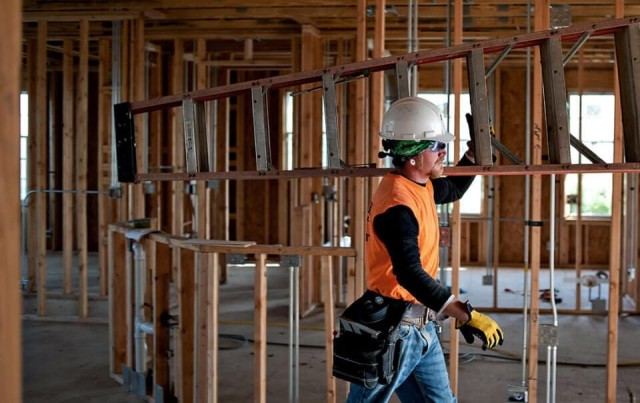


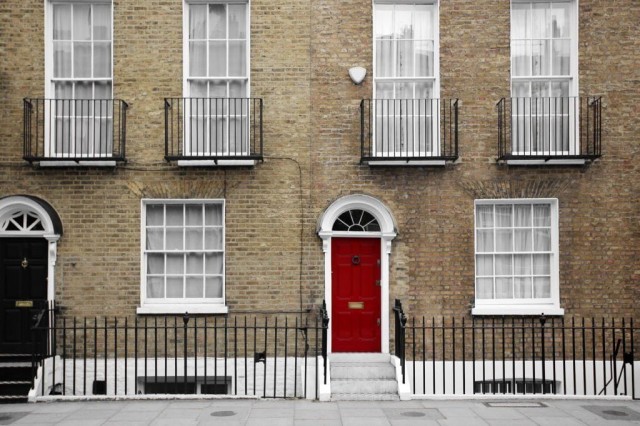
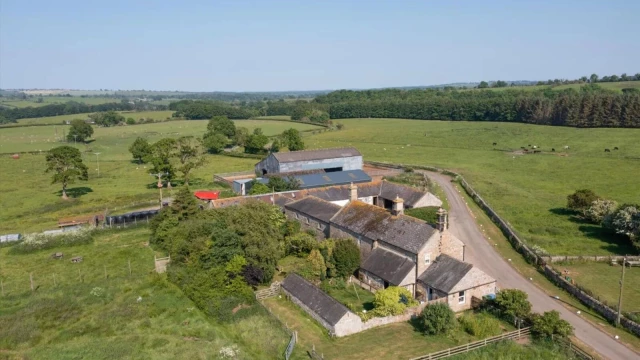



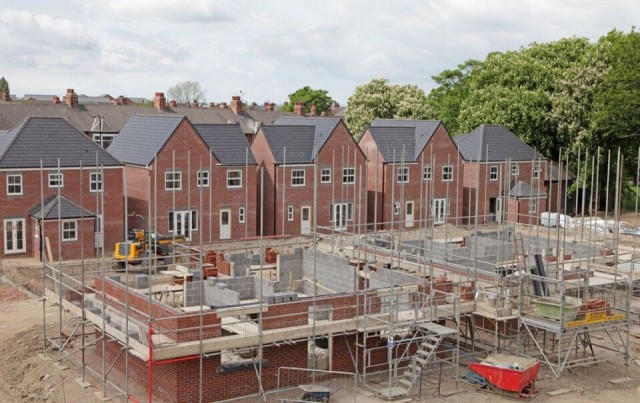
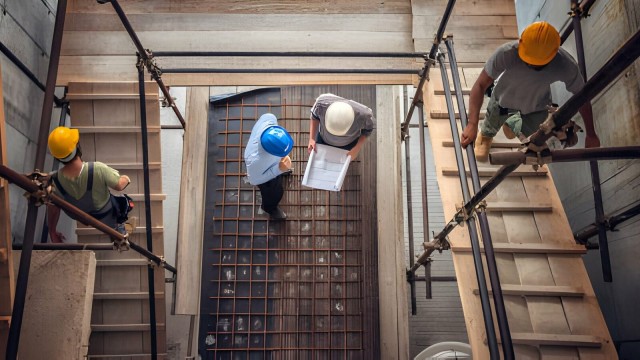
We specialise in crafting creative design and planning strategies to unlock the hidden potential of developments, secure planning permission and deliver imaginative projects on tricky sites
Write us a message